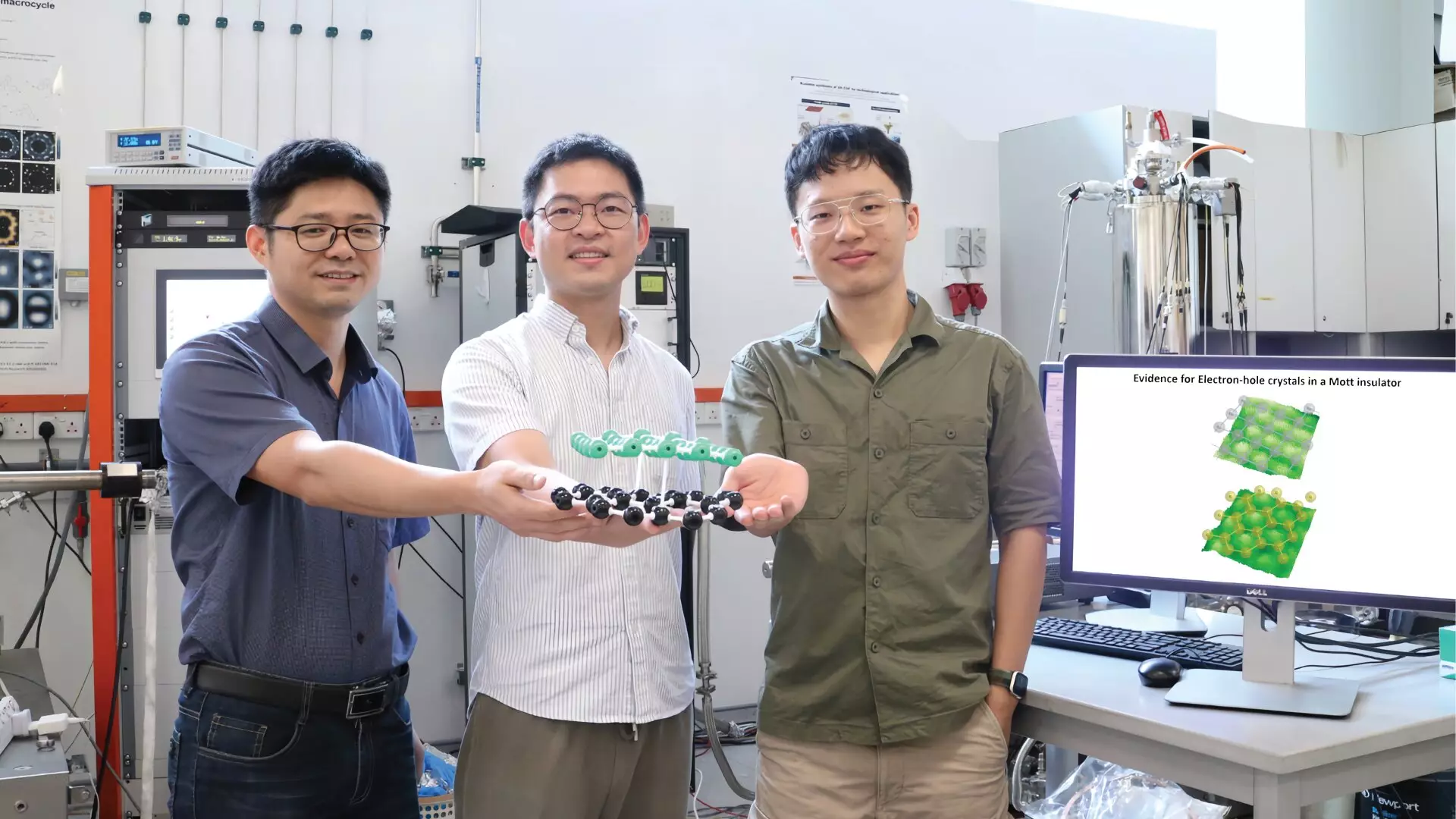In the realm of condensed matter physics, the interactions between electrons within a material can lead to phenomena that redefine our understanding of quantum states. One of the more captivating outcomes of these interactions occurs when the number of electrons aligns with the lattice sites of the host material, resulting in the formation of structures known as electron crystals. This organized arrangement prompts a collective behavior among the electrons, which can serve as a rich foundation for quantum simulations. Furthermore, when both electrons and their positive counterparts, referred to as holes, are present within a system, they can engender even more intricate quantum states. One particularly fascinating state is counterflow superfluidity, wherein electrons and holes travel in diametrically opposite directions without encountering resistance or energy loss.
The Challenges of Maintaining Stability in Electron-Hole Systems
Despite the profound potential of electron-hole pairs, retaining their stability in a single cohesive state presents significant challenges. This instability primarily stems from the tendency of electrons and holes to recombine rapidly, thereby neutralizing their distinct properties. To counter this, researchers have devised methods to segregate electrons and holes across various layers or host structures. Although this stratified approach has yielded promising results in achieving electron-hole states within multi-layered materials, the quest for a naturally occurring single material that can sustain these states remains elusive and riddled with contention. The persistent lack of robust experimental validation underscores the complexities of identifying exotic quantum materials capable of supporting durable electron-hole crystals without their cancellation.
A Revolutionary Breakthrough from NUS
Recent research spearheaded by a team from the National University of Singapore (NUS) marks a significant breakthrough in this domain. By developing and visualizing electron-hole crystals in a groundbreaking quantum material – a Mott insulator comprised of Alpha-ruthenium(III) chloride (α-RuCl3) – the researchers have provided compelling evidence for the existence of these states. This pivotal discovery has far-reaching implications, potentially catalyzing advances in computing technologies ranging from in-memory computing to quantum computing frameworks. Under the guidance of Associate Professor Lu Jiong and Professor Kostya S. Novoselov, molecular insights into the electron-hole crystals were profoundly enhanced through cutting-edge methodologies.
Innovative Techniques: Scanning Tunneling Microscopy
The integration of advanced techniques, particularly scanning tunneling microscopy (STM), was instrumental in revealing the intricate properties of the Mott insulator. STM’s ability to harness quantum tunneling for visualizing atomic-level structures provides a daydream of aesthetics in scientific inquiry. Still, its conventional limitations in studying insulators posed a formidable challenge. The ingenuity of the NUS team lay in combining graphene – a single layer of carbon atoms renowned for its conductivity – with α-RuCl3. This strategic collaboration not only facilitated electron passage through the insulating layer but also enabled dynamic adjustments in electron density, heralding a new era of tunable doping strategies.
Unearthing New Quantum Landscapes
The results obtained from the STM imaging were remarkable. The researchers observed two distinct ordered patterns at varying energy levels within the α-RuCl3 structure, identified as the lower and upper Hubbard band energies. Each of these bands manifested unique periodicities and symmetries, offering a window into the complexity of electronic interactions. Furthermore, manipulations of carrier density through electrostatic gating illustrated the responsive nature of the crystal formations as they transitioned between different states. This direct observation of electron-hole crystal formations heralds the advent of precise control over irregular distributions, where an imbalance between electron and hole populations can become apparent.
Implications for Future Research
As Associate Professor Lu Jiong notes, the dual emergence of distinct charge orderings was an unexpected revelation, shedding light on the deep interplay between electrons and holes under specific conditions. The implications of this research stretch far into the future. By harnessing electrical signals to modulate the behavior of electron-hole crystals, researchers stand on the precipice of engineering new materials capable of swift state transitions—essential for advancing computational speed and efficiency. Not only does this development promise new architectures for quantum computing, but it also opens doors to innovative materials designed to simulate quantum phenomena, propelling the field of quantum physics into a new era of exploration and application.
Through the lens of this pioneering study, the future of quantum technologies appears not only promising but ripe with unexplored opportunities that could radically transform our understanding of the universe at its most fundamental level.


Leave a Reply